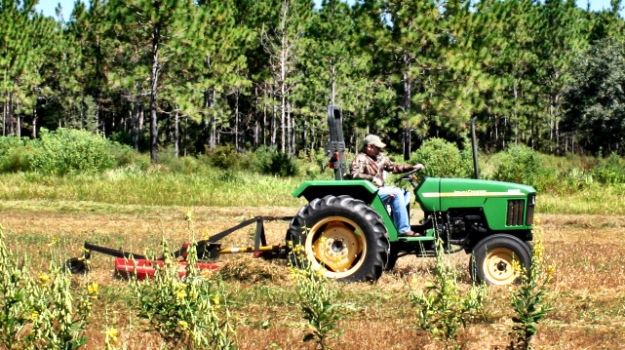Hunt Bucks Between Two Bedding Areas in the Mornings

Editor’s Note: Mossy Oak Pro Lance Howard lives in Theodore, Alabama, just south of Mobile, in one of the southernmost sections of Alabama. During the Great Depression of the 1930s, when deer and turkey were nearly wiped out across Alabama, large landowners in south Alabama protected the deer and turkeys on their lands. Today these many south Alabama deer have resulted in overpopulation of the deer herd there. Howard has lived on his family’s 3,500 acre peanut and cotton farm all his life and has developed strategies for taking deer there.
The land I hunt is primarily agriculture planted in peanuts and cotton. After those two crops are harvested, a cover crop of wheat and oats are planted. Some of our 100-acre peanut fields have hardwood draws, thick-cover areas and pine plantations, surrounding the outer edges of the peanut fields. We also have BioLogic food plots planted in several places in the fields and in the woods. During early bow deer season, the deer are primarily feeding on and in the peanut fields. So,that’s when I focus on peanut fields, where the deer are eating the foliage of the peanut plants.
We have numbers of creeks running through our property that is bordered by hardwood draws, and we have a road system that allows us to hunt the property from any direction. Because I've hunted this land all my life, I have a pretty good idea of where the deer will travel from their feeding areas to their bedding areas. The deer in our region will start moving into the peanut fields just before dark, and they’ll graze in those fields all night long. Then, in the early morning, they come out of the peanut fields, heading back to their bedding regions. I keep plenty of trail cameras out before and during deer season. On our agriculture, I’ve documented that our bucks will bed down twice. Immediately after feeding in the peanut fields, the deer usually will bed down within 100 yards of the agriculture. As the sun comes up, the deer move from that bedding area to thicker cover where they will bed down and stay throughout much of the day.
Originally, I hung my trail cameras 50 to 100 yards away from the peanut fields. I was trying to see what bucks were coming in and out of the peanut fields, what trails they were using, and where they were going to the bedding areas. Then, I started hanging my cameras in places where I thought the bucks would be staging to move into the peanut fields late in the afternoon. I discovered that just before sunrise I’d see deer laying down right in front of my cameras. At 7 or 8 a.m., they'd leave those bedding areas close to the peanut fields and move to gallberry thickets about 5- to 6-foot tall that created extremely-thick cover. Instead of setting up my tree stand or ground blind close to the deer’s first bedding site, I set up between the first bedding area and the second bedding site. This way, I had an opportunity to take the deer between the two bedding areas without disturbing them in either one of the bedding sites. By setting up between their first bedding area and their primary bedding area, I had enough light when I went into the woods to get set up on the deer, while they still were in their first bedding areas without spooking deer out of their beds. Then when they start leaving their first bedding area going to their primary bedding area, I have plenty of light to shoot and not spook any deer.
To learn more about hunting, check out John E. Phillips’ new eBook and print book, “Bowhunting Deer: Mossy Oak Pros Know Bucks and Bows.” You also can download a free Kindle app that enables you to read the book on your iPad, computer or Smartphone.
For information on making jerky from your deer to provide a protein-rich snack, you can download a free book from http://johninthewild.com/free-books.


























